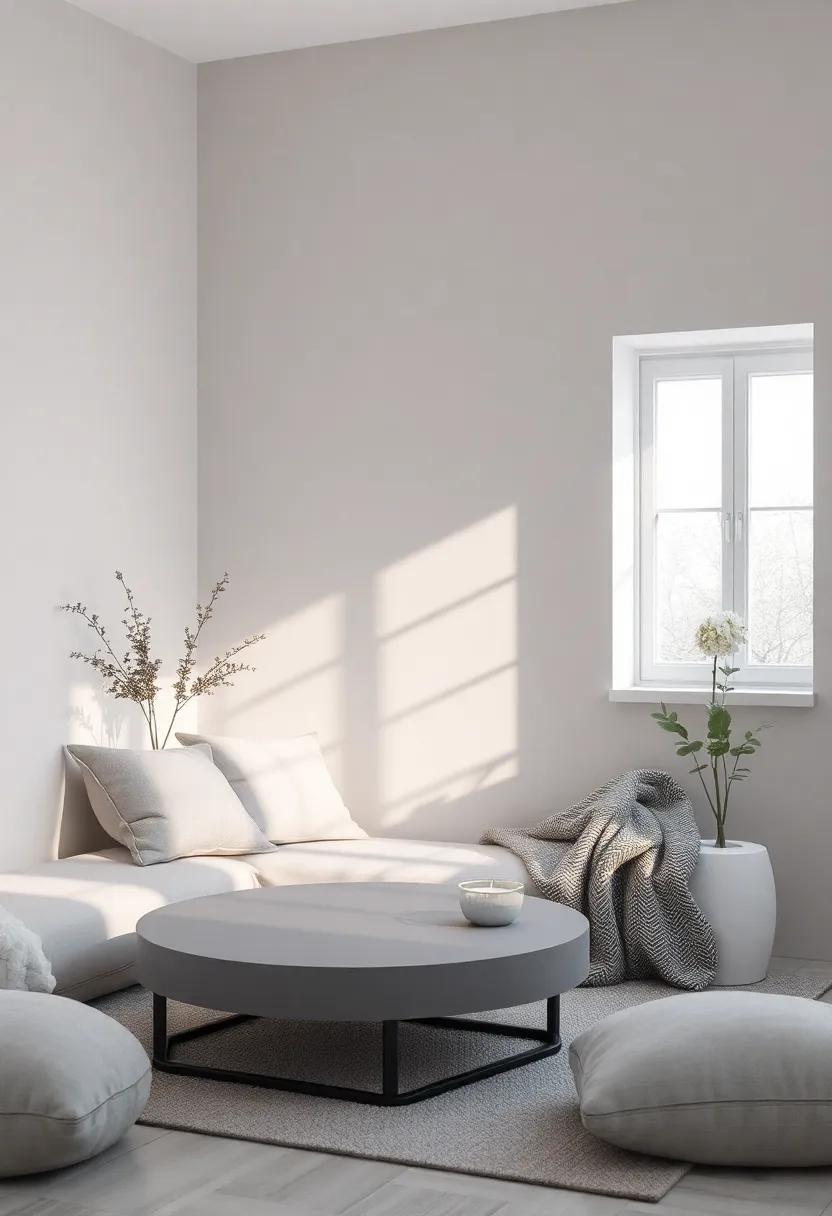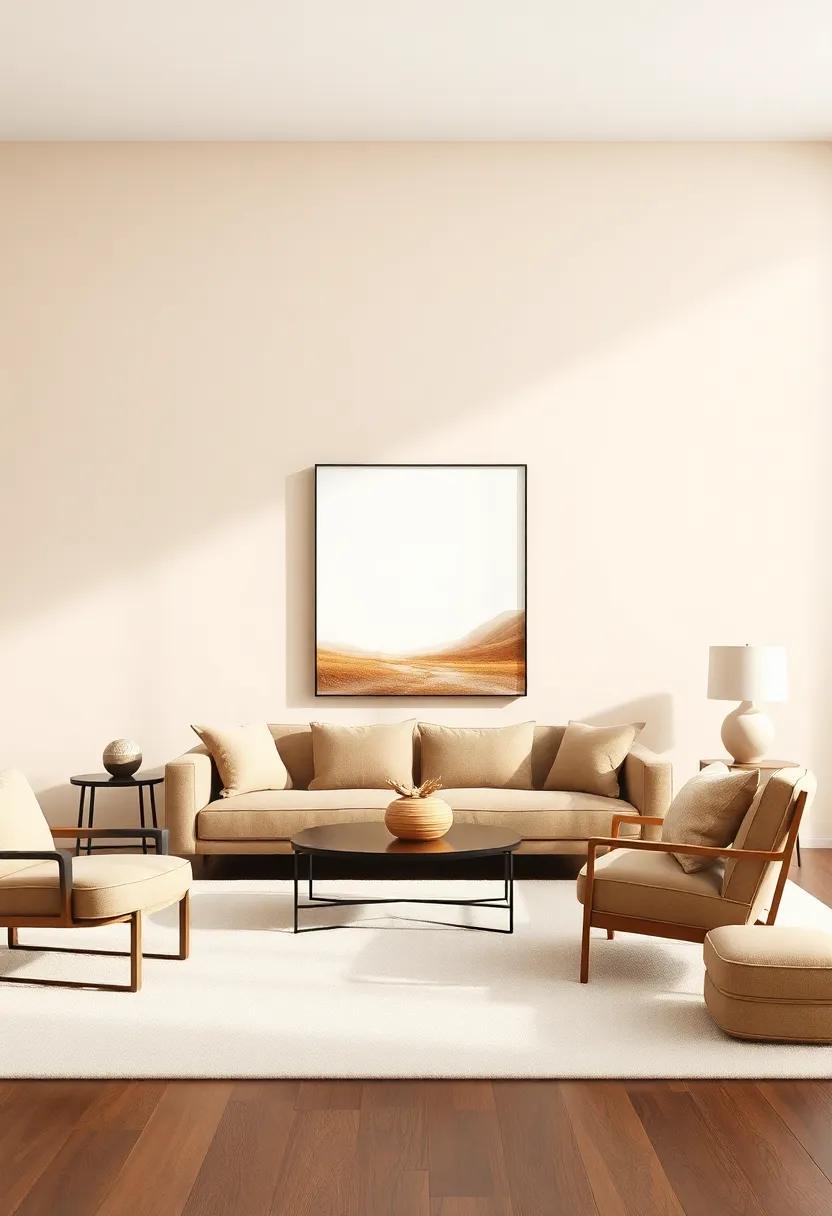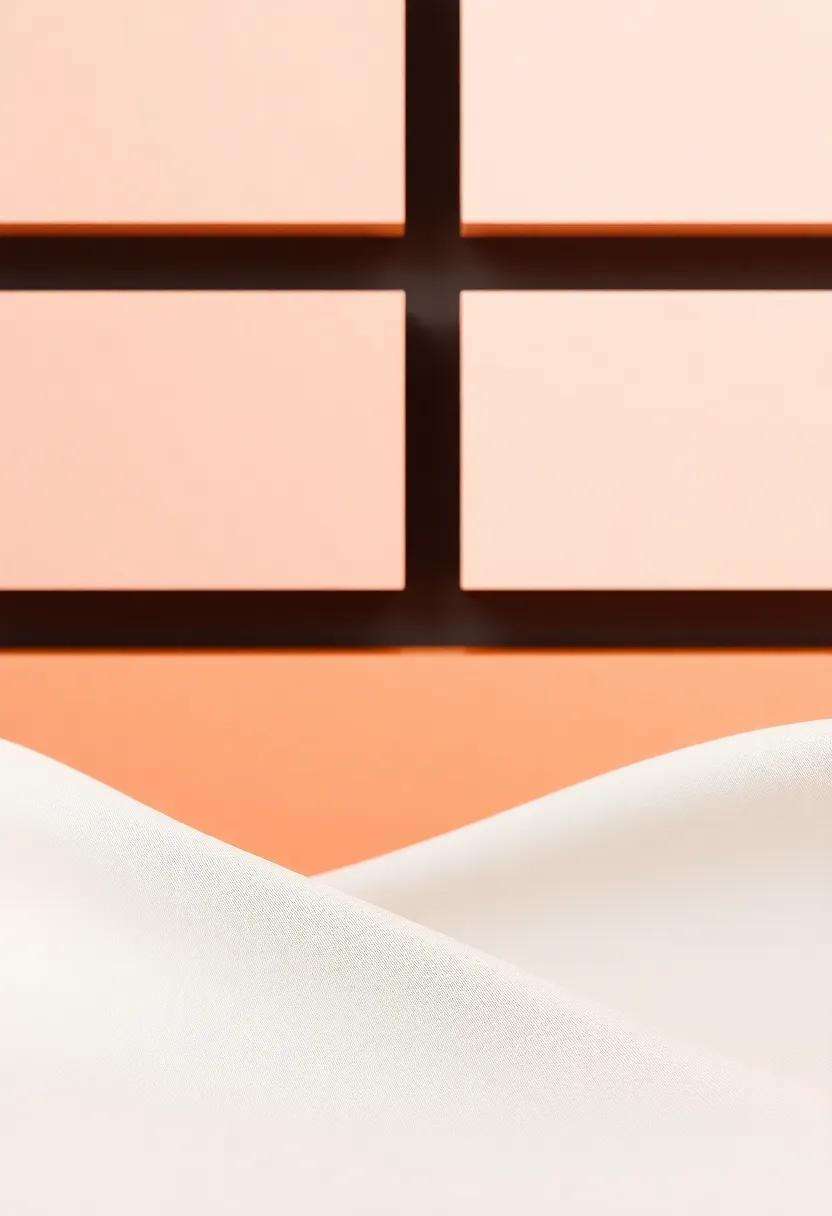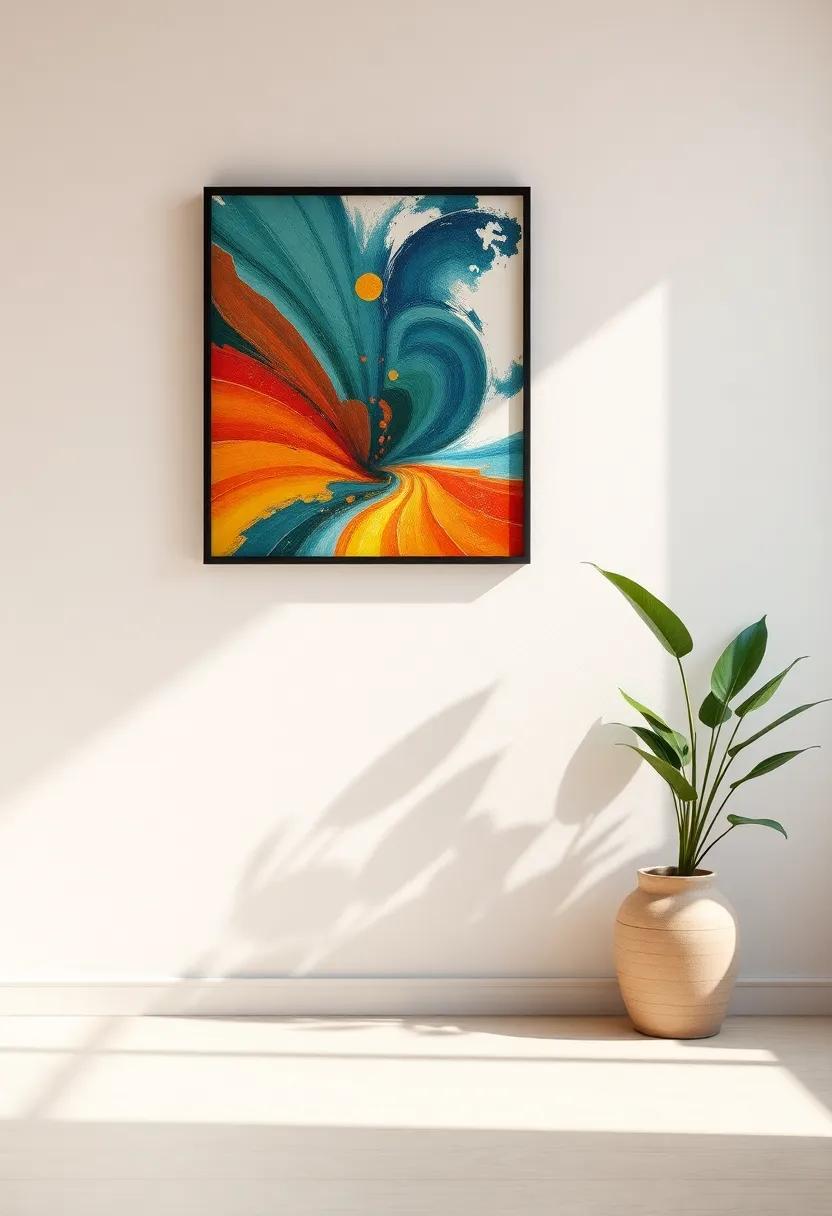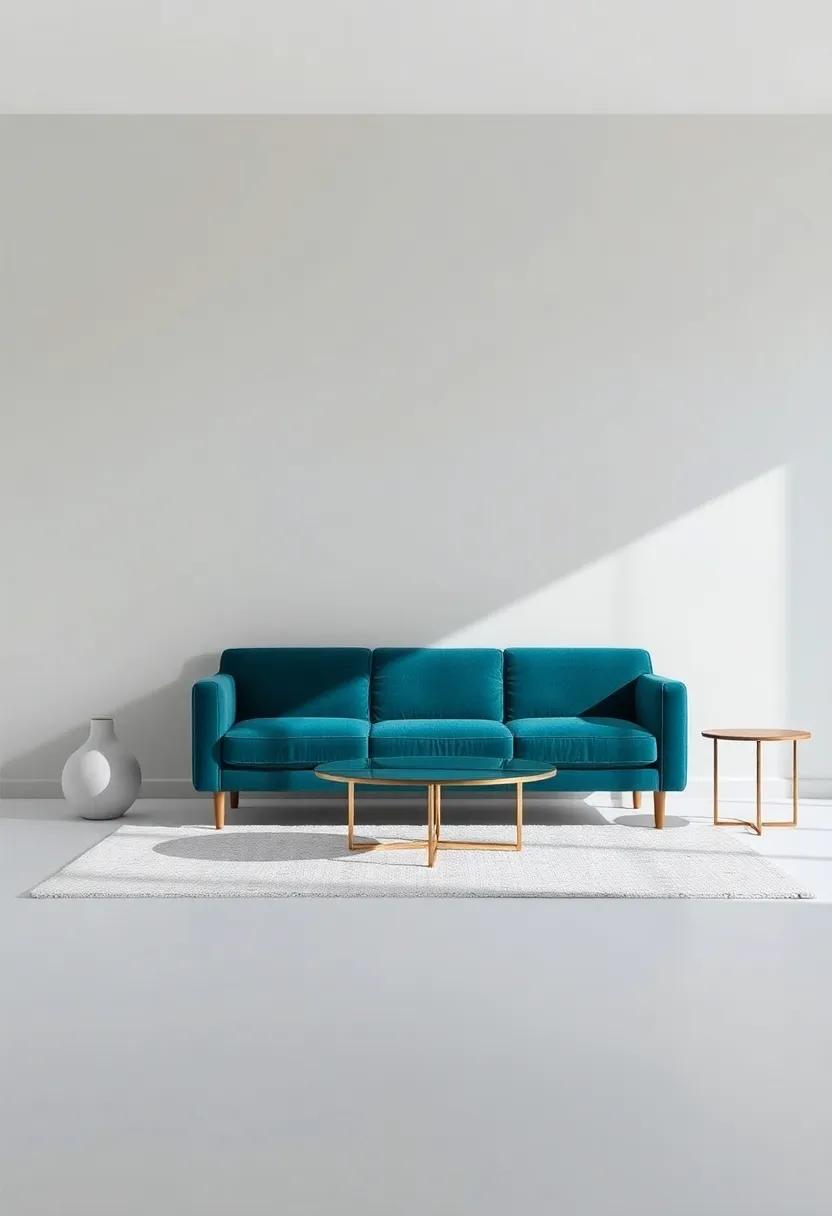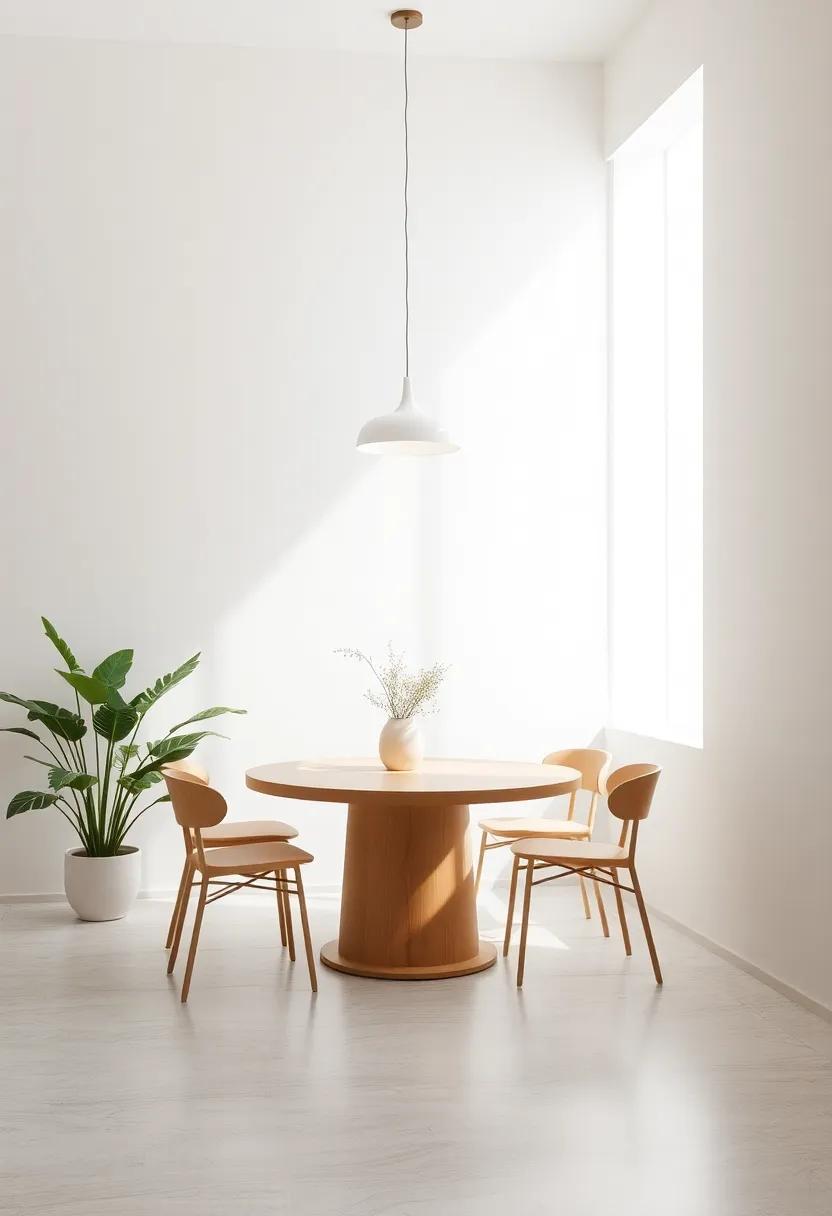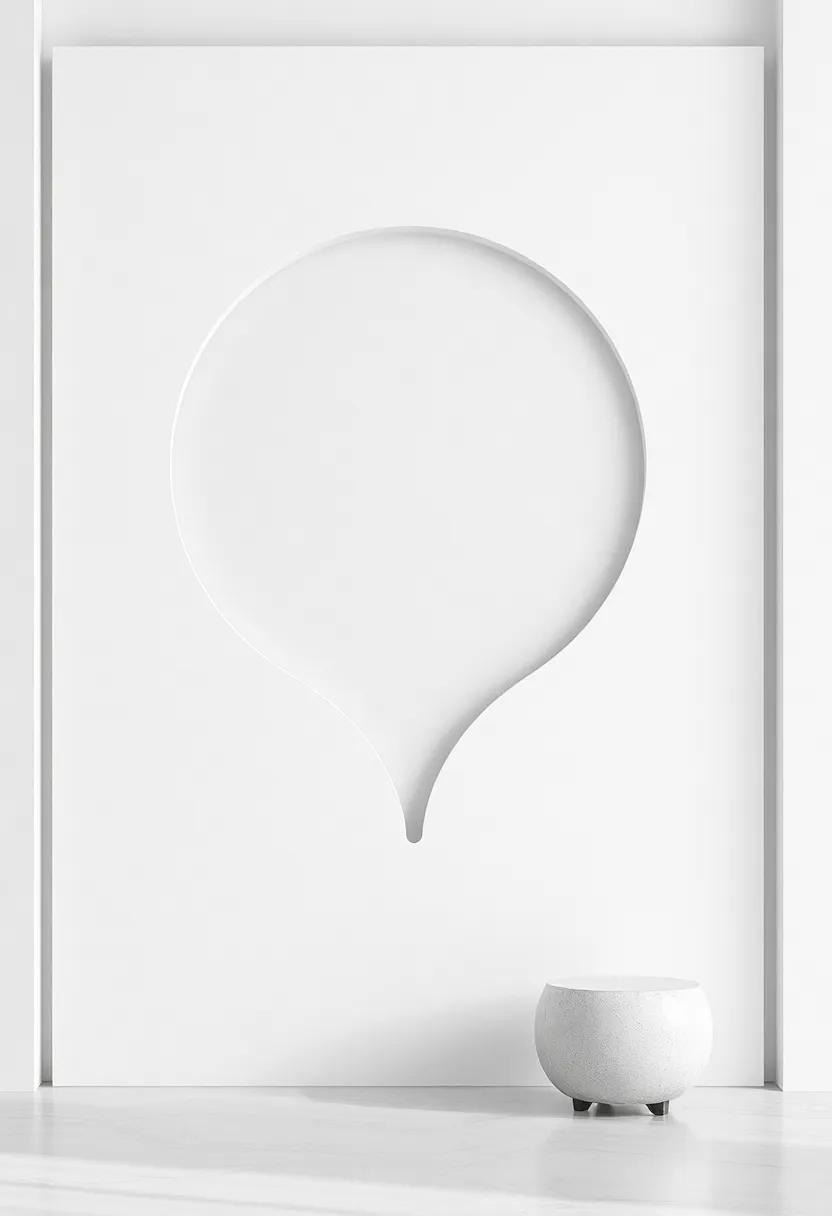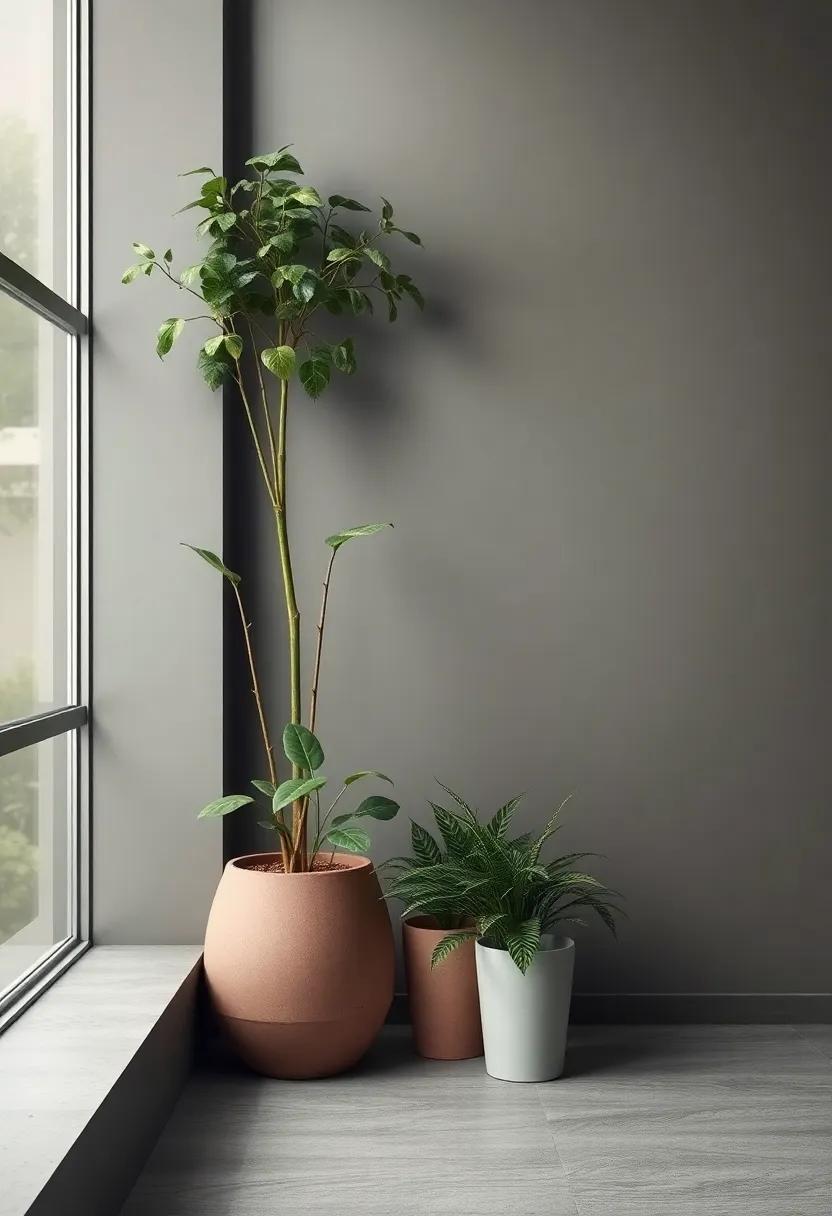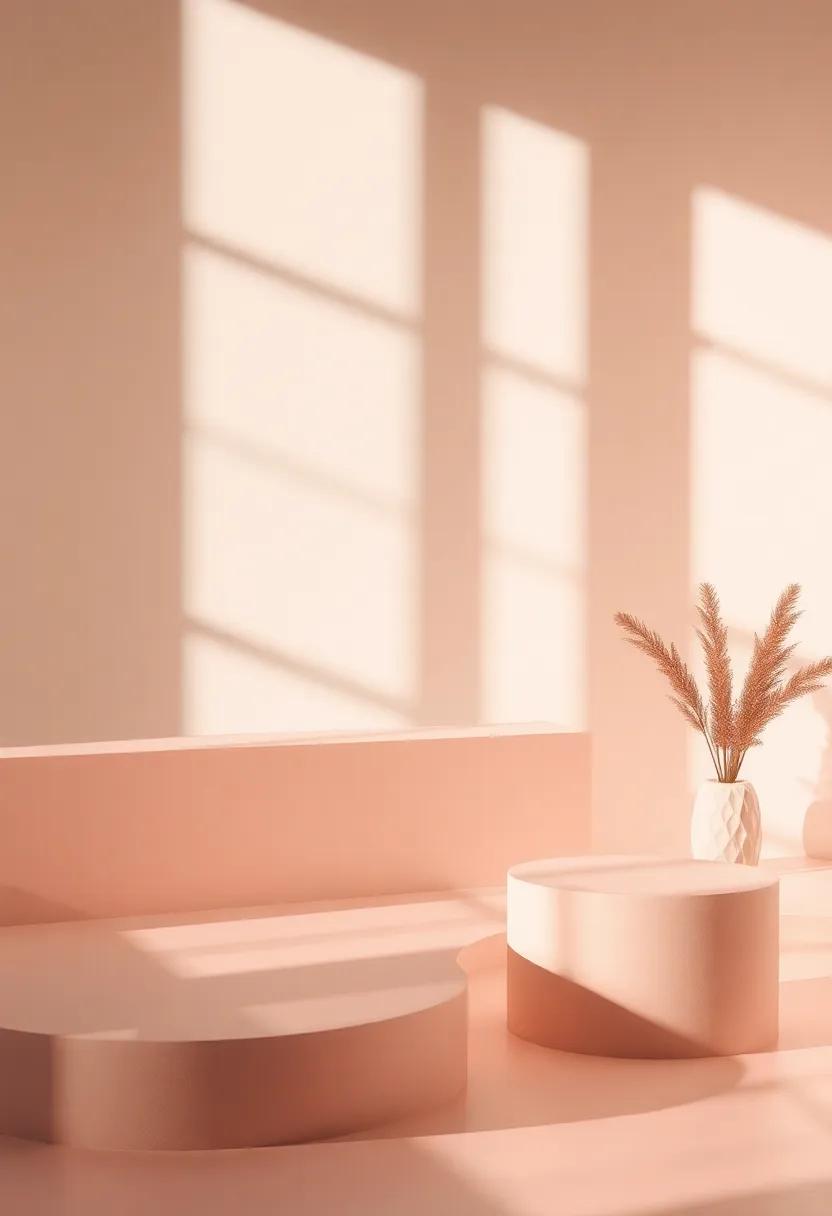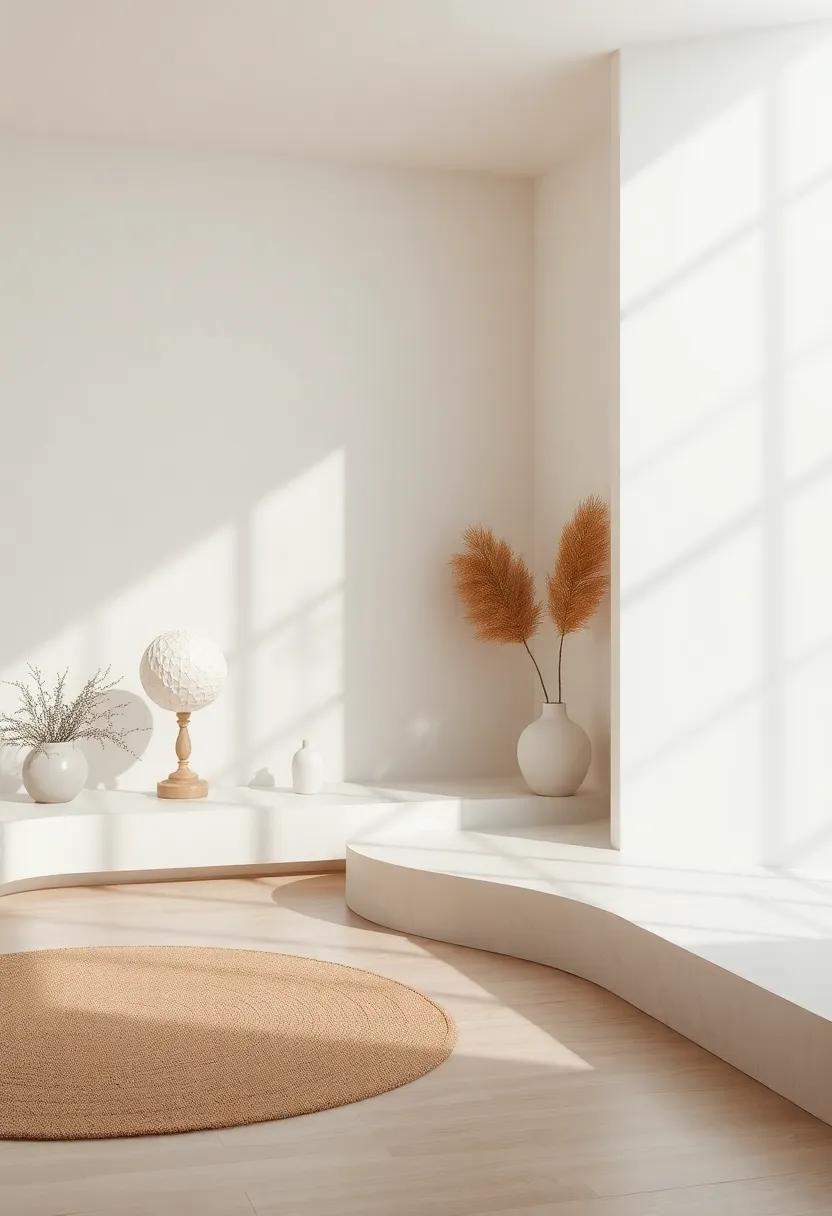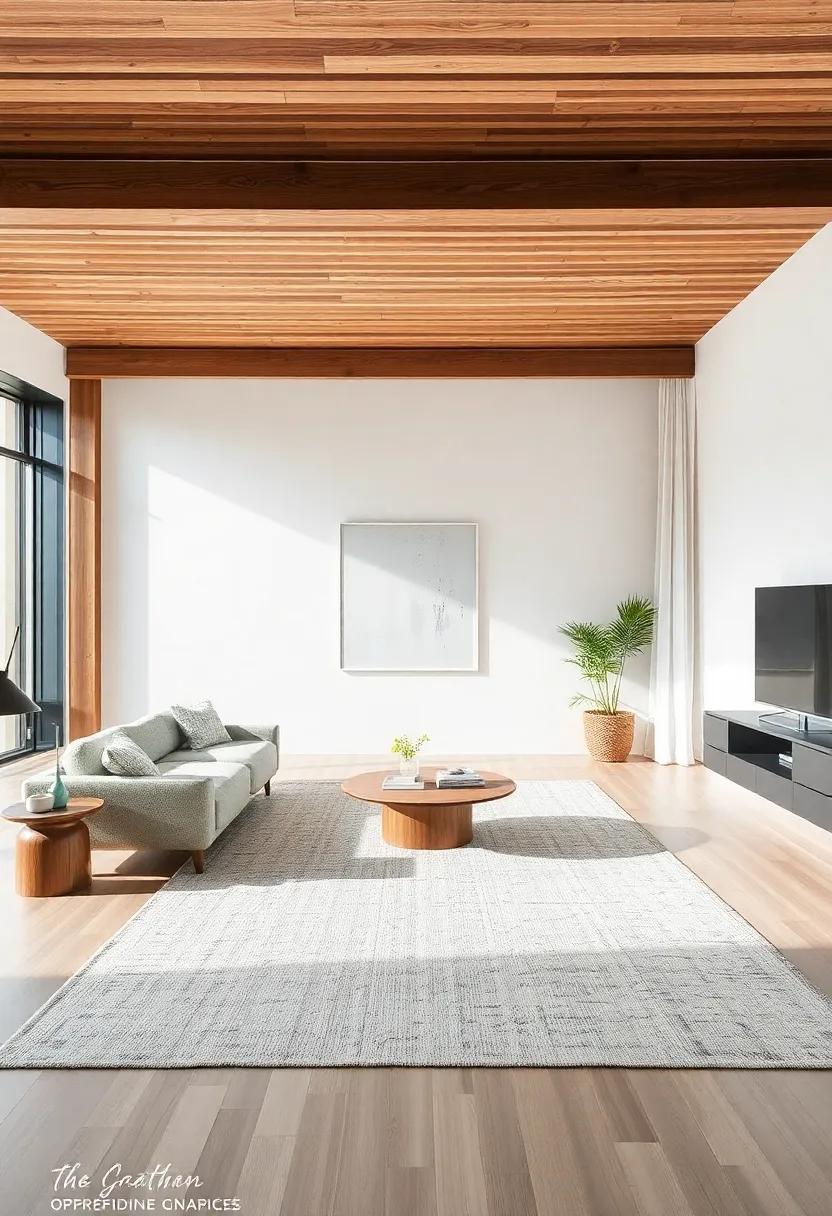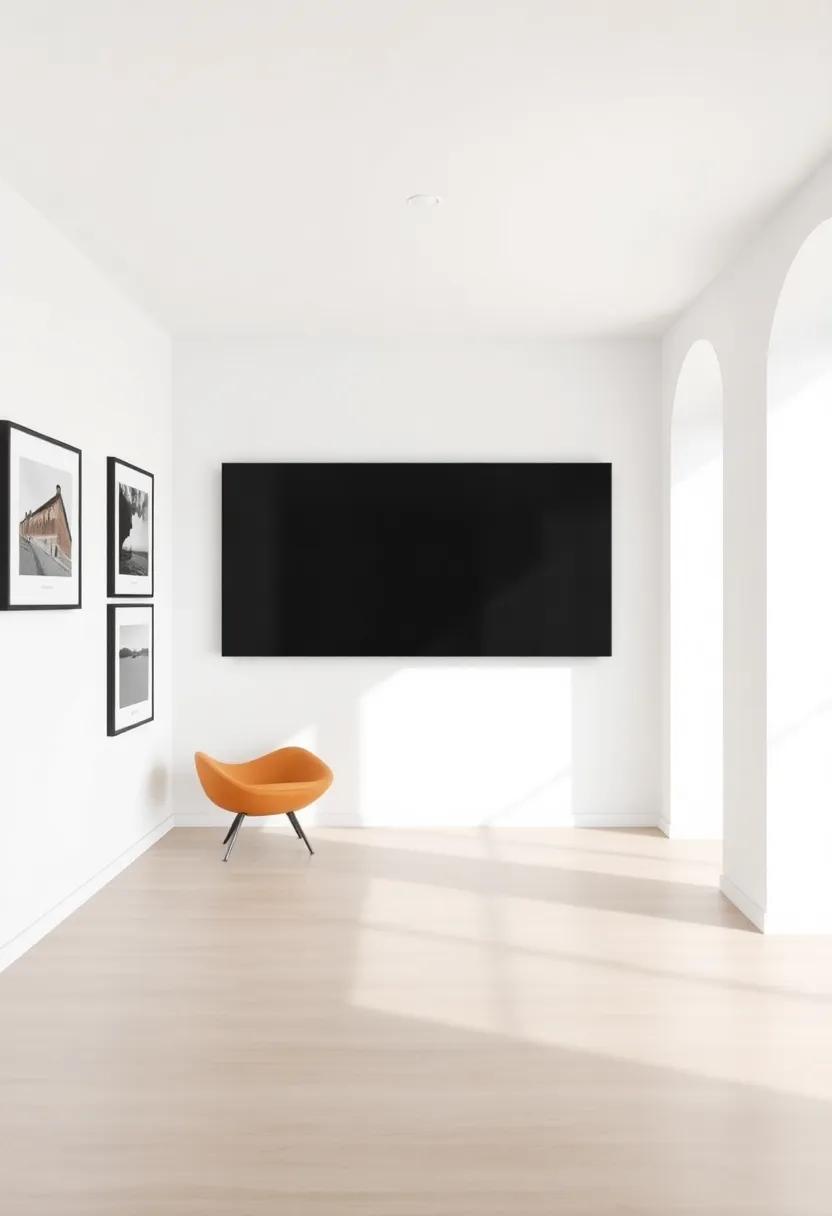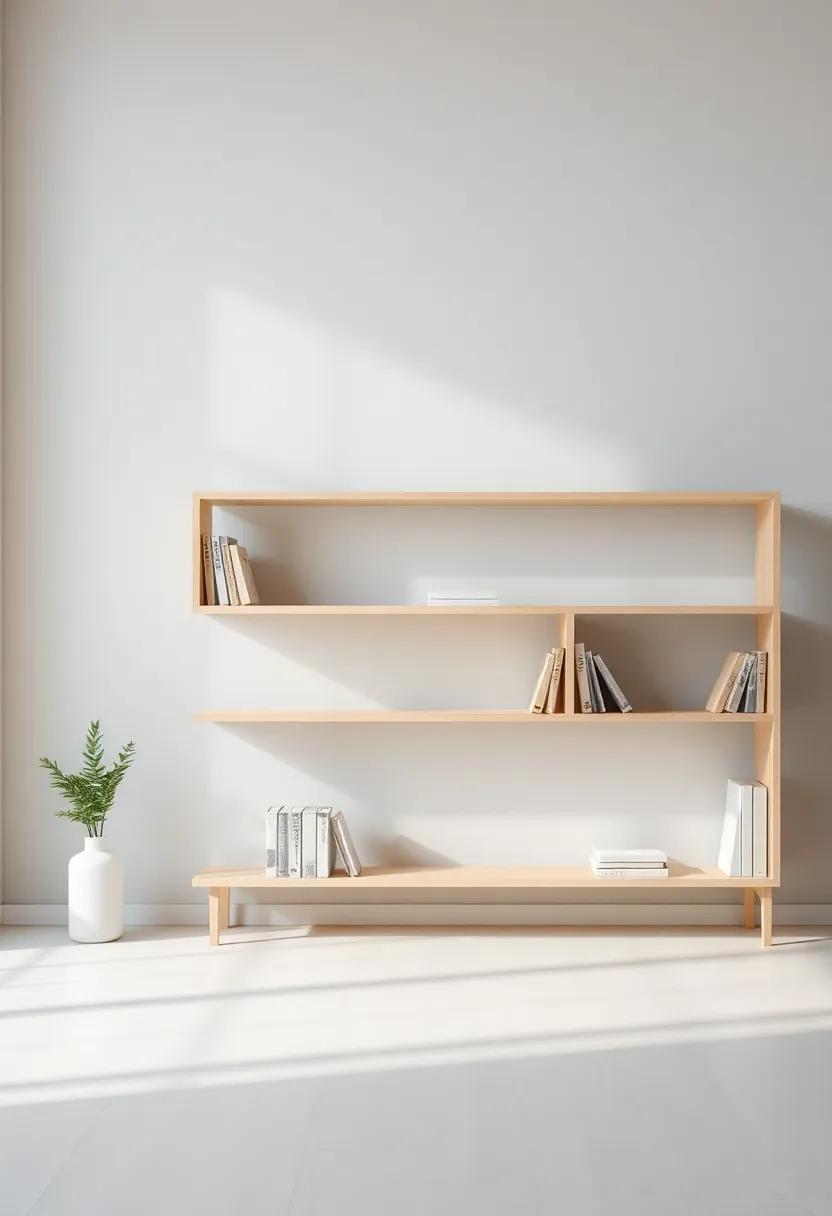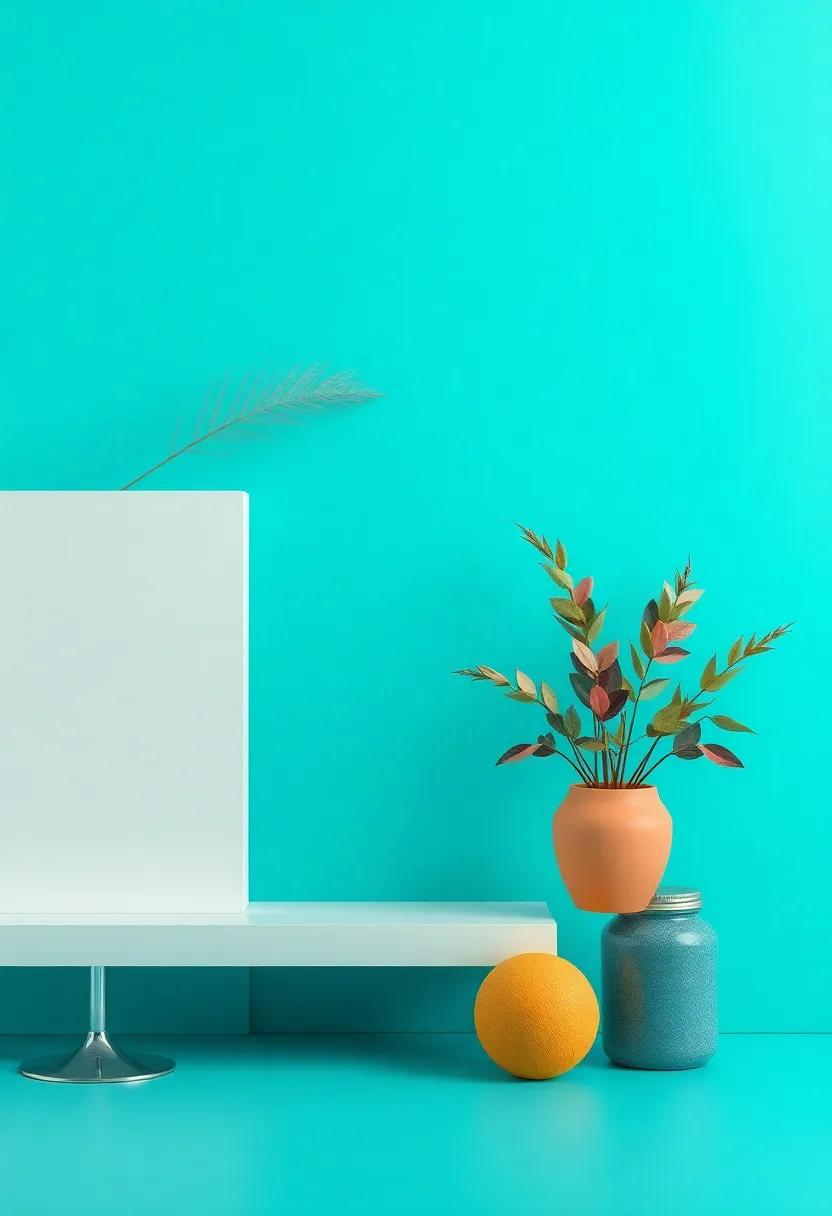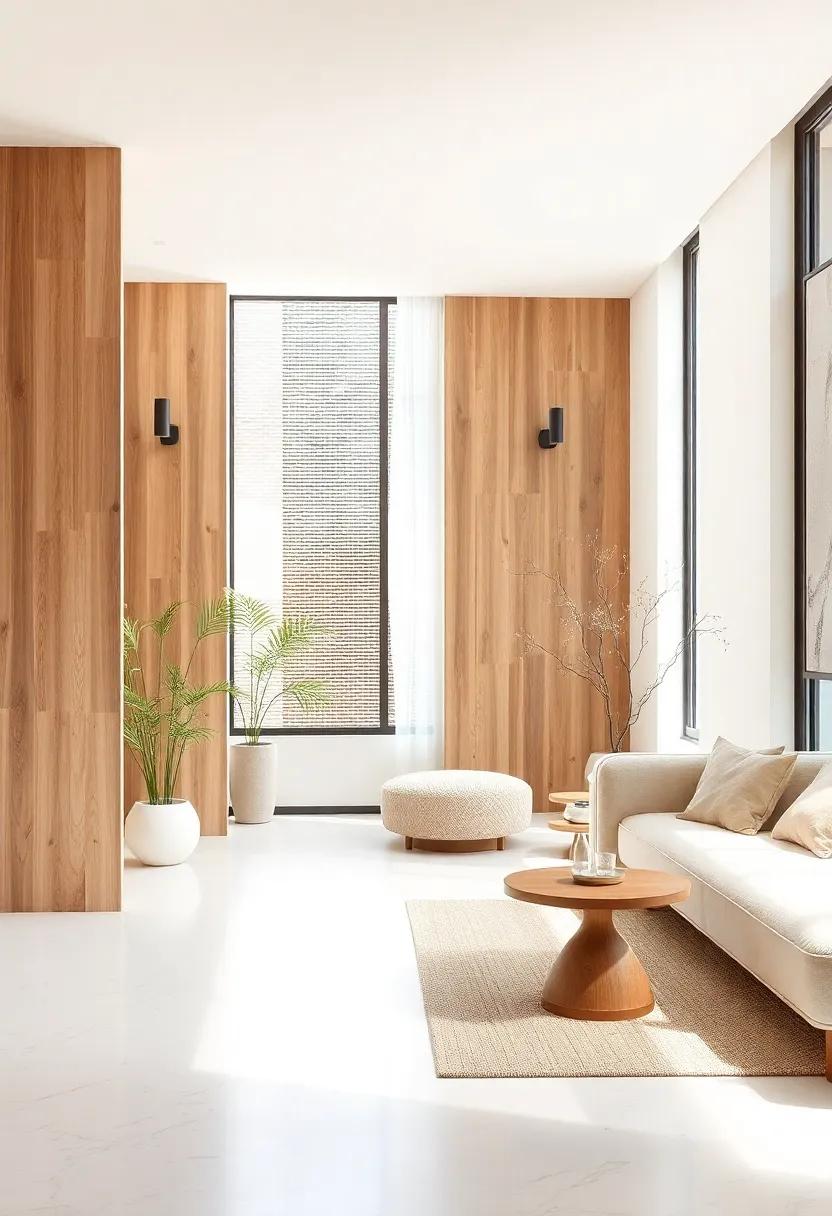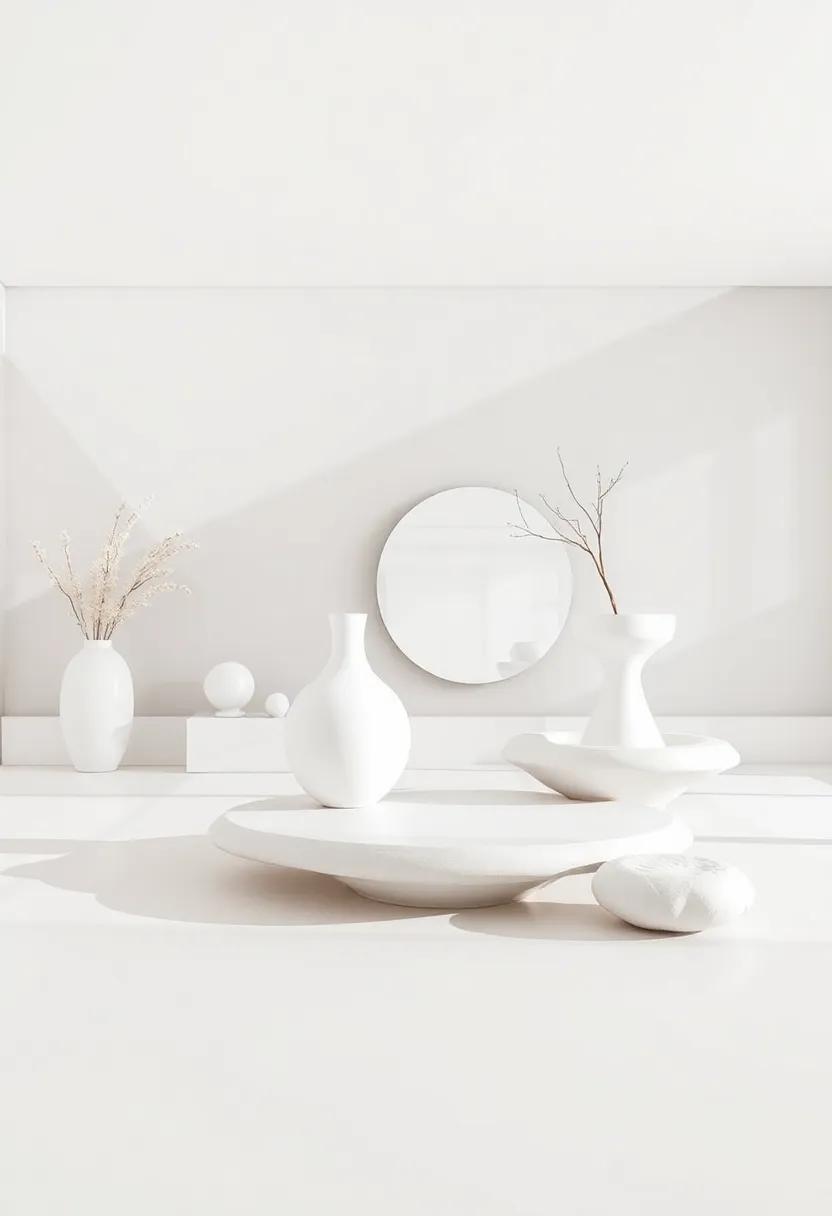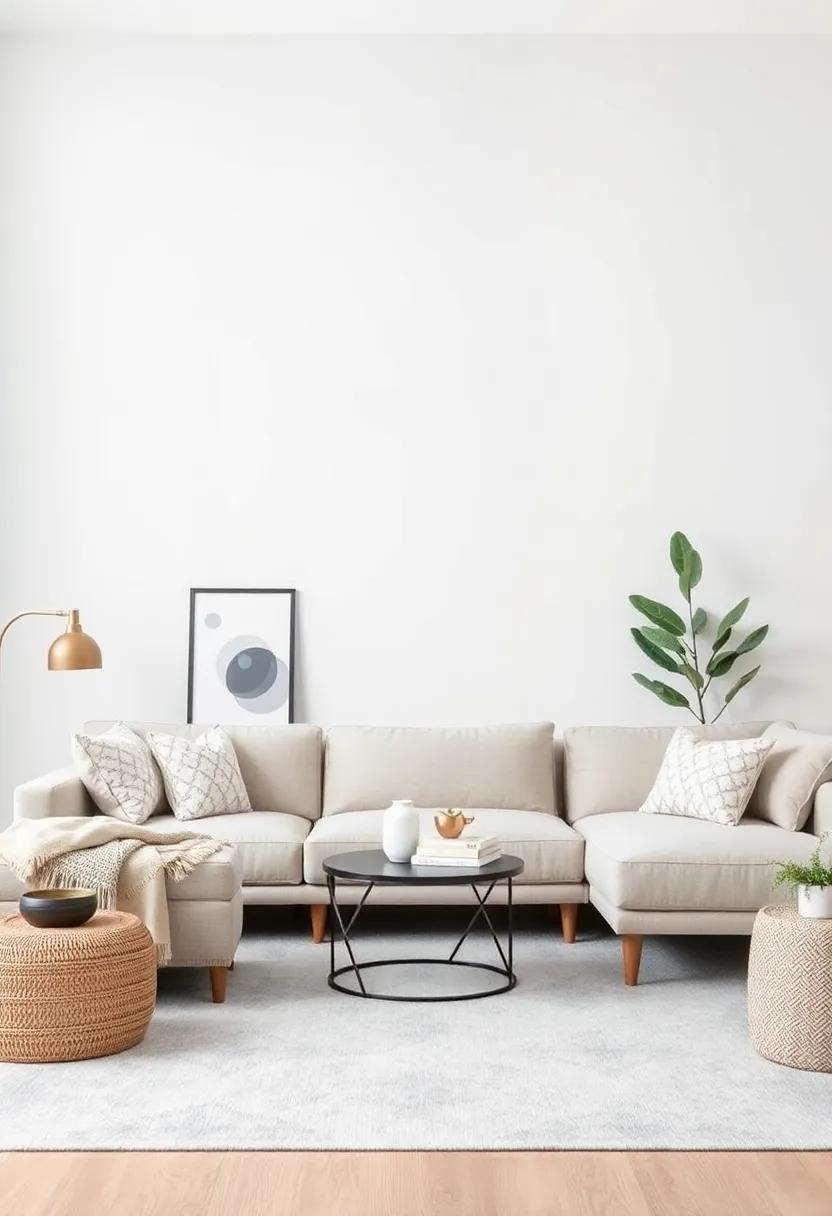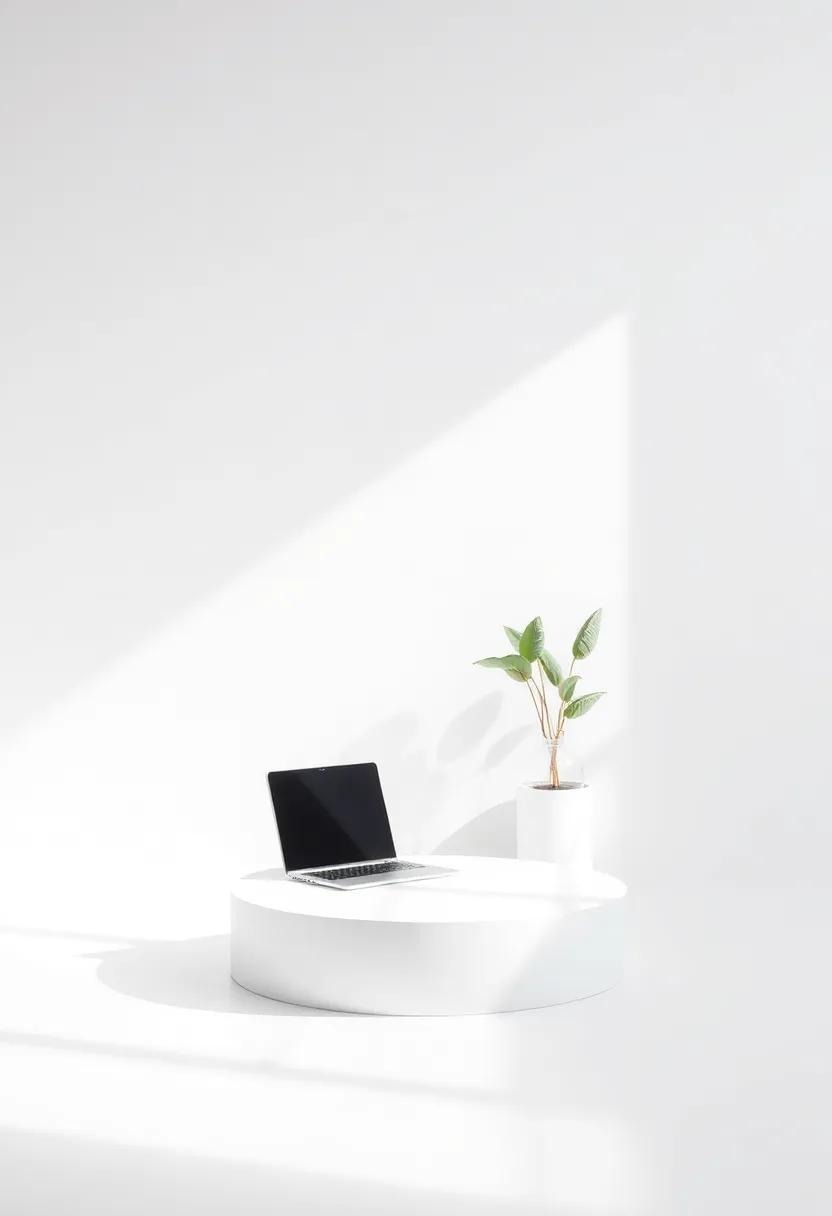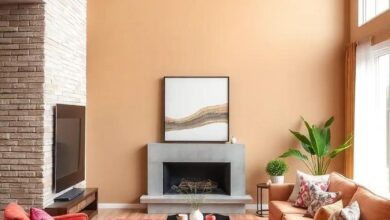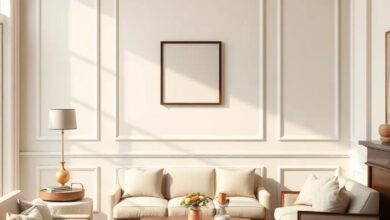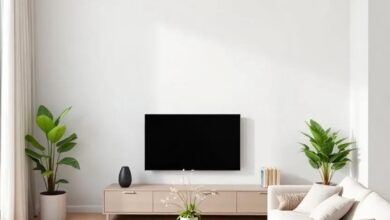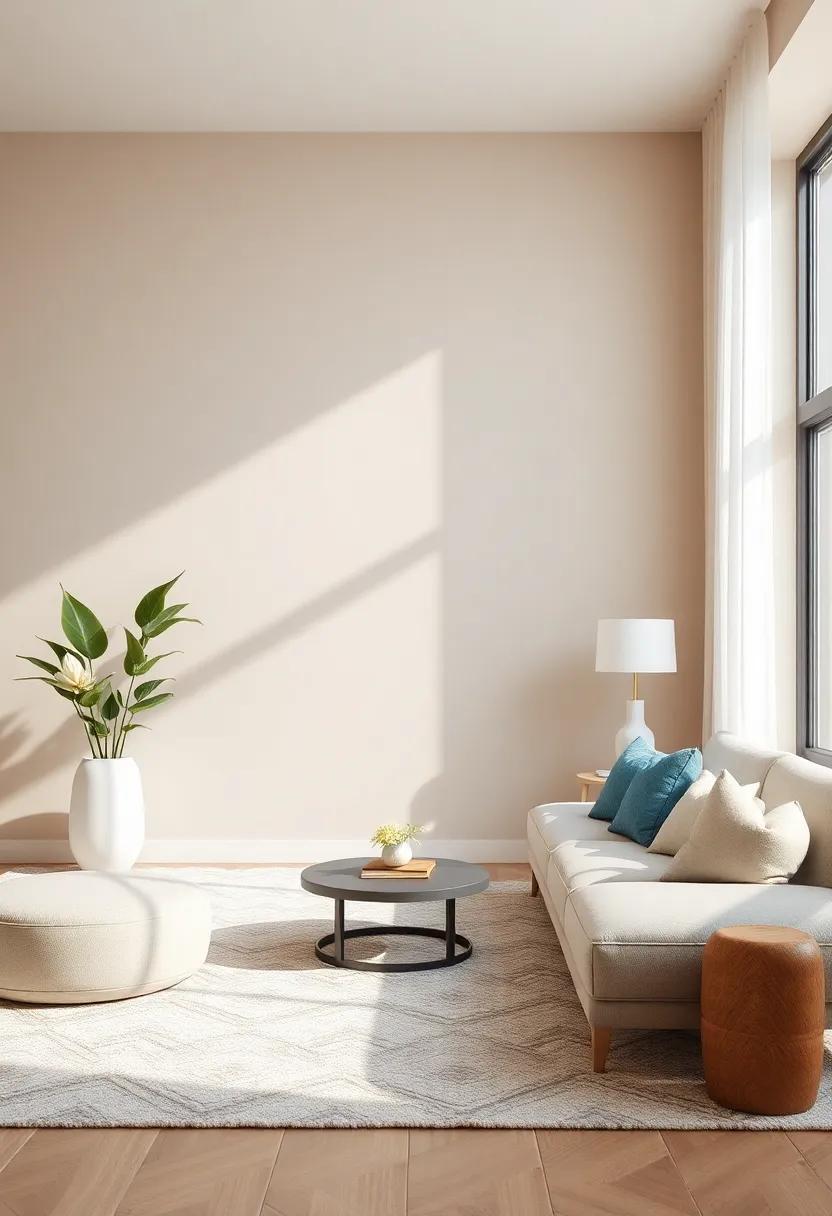
Tips for adding depth to your living room with neutral wall colors.
In the world of interior design, neutral wall colors often serve as a blank canvas, eagerly awaiting the brushstrokes of creativity adn personality. While they radiate calm and sophistication, they can also risk feeling flat or uninspired if not approached thoughtfully. Though, with a touch of ingenuity, these subtle hues can transform any living room into a captivating space filled with depth and character. In this article, we will explore a variety of tips and techniques to elevate yoru neutral walls beyond the ordinary, allowing you to create a living room that is both inviting and visually engaging. Whether you’re working with soft beiges, cool grays, or warm taupes, prepare to discover how to harness the power of texture, layering, and contrast to breathe life into your neutral palette.
Exploring the Elegance of Neutral Tones in Living Room Design
Neutral tones serve as a canvas for sophistication, allowing for endless combinations that breathe life into your living room. To enhance the elegance of a neutral palette, consider incorporating layers through textiles and textures. Opt for rich fabrics like velvet or linen for your sofas and cushions,and throw in a textured area rug to ground the space. Remember, the way light interacts with surfaces can create an illusion of depth – use a mix of matte and glossy finishes on furniture and accents to add a visual intrigue that captivates the eye.
Another engaging approach is to introduce contrasting accents that accentuate the neutral wall colors. Consider using accessories in deep shades like navy, forest green, or even a striking burgundy. These pops of color can be introduced through artwork, decorative pillows, or a statement piece like an armchair. Below is a simple table highlighting some effective combinations:
| Neutral Color | Contrasting Accent | Effect |
|---|---|---|
| Beige | Deep Blue | Calm and Inviting |
| Soft Gray | Burnt Orange | warmth and Energy |
| White | Charcoal | chic Elegance |
Creating a Cozy atmosphere with Soft Gray Hues
Soft gray hues can transform your living room into a sanctuary of tranquility, striking the perfect balance between modern elegance and timeless charm. These shades serve as a versatile backdrop that enhances natural light while providing a calming foundation to style your space. Consider incorporating layered textures and dimensional elements using materials such as linen, wool, or velvet to create visual interest. Additionally,integrating complementary colors and natural elements can elevate the overall aesthetic:
- Layering soft gray throw pillows with deeper tones
- Incorporating wooden accessories for warmth
- Adding greenery to breathe life into the neutral palette
When paired with the right furnishings,soft gray can make your living room feel both spacious and cozy. To maximize the depth and charm of the ambiance, consider using soft lighting—be it through lamps with warm-toned bulbs or candles strategically placed around the room. You can also introduce a touch of character with an accent wall, perhaps painted in a deeper gray or adorned with textured wallpaper, which could visually anchor the space and add an extra layer of sophistication. Explore these aspects to create an inviting area where comfort meets elegance:
| accent Ideas | Description |
|---|---|
| Cushions | Soft fabrics in various shades of gray |
| rug | Textured rug to enhance coziness |
| Artwork | Black and white pieces to add contrast |
The Impact of Warm Beige Shades on Living Room Ambiance
Warm beige shades possess a unique ability to evoke a sense of tranquility and comfort, transforming a living room into a serene retreat. This versatile hue can create a cohesive backdrop that enhances both customary and modern decor styles.When you choose warm beige, you’re not just selecting a color; you’re inviting a feeling of warmth and calmness. it harmonizes effortlessly with a wide range of furnishings, allowing you to showcase textures and patterns without overwhelming the space. Some key advantages of warm beige include:
- Versatility: Pairs beautifully with various accents and color palettes.
- Illumination: Reflects light softly, making rooms feel airy and spacious.
- Warmth: Offers a cozy atmosphere, perfect for gathering spaces.
Incorporating warm beige hues provides an excellent foundation for layering in different textures and visual elements. By integrating various materials—such as wood,fabric,and metal—you can add depth and interest to the walls and overall design. Complementing your beige walls with rich wooden furniture or adding vibrant pops of color through cushions and artwork can further elevate the ambiance. Consider the following elements to maximize the impact of warm beige:
| Element | Recommended Pairing |
|---|---|
| Furniture | Textured fabrics in earth tones |
| Artwork | Bold colors for striking contrast |
| Accent Pieces | Gold or brass for a touch of elegance |
Textured Fabrics: Enhancing Depth with Neutral Color Palettes
Incorporating textured fabrics into your living room can considerably enhance the overall aesthetic, especially when paired with a neutral color palette. These textures can create visual interest and depth, making a neutral space feel more inviting. Consider layering different materials like velvet, linen, and wool to add a rich dimension to your furnishings. The interplay of smooth and rugged textures can break the monotony of solid colors, inviting touch and curiosity.
To effectively integrate textured fabrics, you might explore a few key elements: throw pillows, area rugs, and upholstered furniture. Here are some suggestions for incorporating these elements:
- Mix and match pillows in various fabrics like chunky knits, soft velvets, and light linens.
- Choose an area rug that features a tactile surface, such as shaggy or braid-woven options.
- Select upholstered pieces with textured fabric, like tufted sofas or linen armchairs.
Remember,the goal is to create a harmonious blend of textures that complement the existing color scheme,enhancing the depth and dimension without overwhelming the senses.
Layering Neutrals with Complementary Accent Colors for Interest
When working with a palette of neutrals, the key to creating a dynamic and inviting living space lies in the art of layering. Begin by selecting a base layer of soft neutrals, such as beige, taupe, or soft gray, for your walls. These tones provide an unobtrusive backdrop that allows for versatility. Next, introduce complementary accent colors that breathe life into the room. Consider vibrant hues like teal, burnt orange, or mustard yellow, which can be integrated through cushions, throws, or artwork, establishing a delightful contrast that enlivens the neutral tones without overwhelming them.
To further enhance the depth and interest, incorporate textures and patterns that resonate with your chosen accent colors. Velvet pillows, patterned rugs, and unique art pieces can all play a vital role in achieving visual cohesion. Here’s a simple table that illustrates potential accent color pairings:
| Neutral Base | Accent Color | Texture Ideas |
|---|---|---|
| Soft Gray | Coral | Knitted Throws |
| Warm Beige | Emerald Green | Silk Cushions |
| Cool Taupe | Sunflower Yellow | Patterned Rugs |
By thoughtfully selecting accent colors and textures that complement your neutral walls,you can curate a living room that not only feels inviting but also tells your personal style story.
Incorporating Art to Vibrantly Contrast Neutral Walls
Neutral walls act as a blank canvas,allowing art to shine with vibrant contrast. To create striking focal points, consider incorporating pieces that echo the room’s overall style while introducing new bursts of color and texture. Bold abstract paintings, whimsical sculptures, or vintage frames can breathe life into your living space. When selecting artwork, think about how the hues interact with your wall color: a rich navy or deep burgundy can pop dramatically against soft beige, while shining pastels can offer a playful twist. You could even mix and match different styles to create a personalized gallery wall that speaks to your inner curator.
Additionally, don’t shy away from three-dimensional art forms that add an unexpected dimension to the flatness of a neutral backdrop. Think textured wall hangings or framed mirrors that introduce not just color but also light and depth. To enhance the visual appeal, consider these options:
- Large canvas prints for dramatic flair
- Framed photographs in contrasting tones
- Wall decals for playful designs
Remember to balance the quantities and sizes of the pieces to avoid overwhelming the space. Smaller, intricately detailed pieces can be paired with a larger art installation to maintain harmony within the arrangement. A well-thought-out display not only enhances your décor but also elevates your living experience, making it both inviting and inspiring.
Statement Furniture Pieces: Making an Impact Against Soft Backdrops
Furnishing your living room with statement pieces can transform a soft backdrop into a striking visual narrative. These standout items not only serve as conversation starters but also anchor the room’s design. Consider incorporating bold furniture choices such as:
- artistic sofas: A uniquely shaped or vibrantly colored sofa can serve as the focal point of the space.
- Eye-Catching Chairs: Opt for chairs with distinctive patterns or textures that draw the eye.
- Unique coffee Tables: A sculptural coffee table adds depth and intrigue while being functional.
- Statement rugs: Rugs with bold designs can ground the entire layout and enhance the aesthetic flow.
To ensure that these pieces shine against neutral wall colors, balance is key. Position them thoughtfully within the room layout to create harmony, and think about the larger context, including lighting and other decor elements. Utilize a few strategic accessories that complement your statement furniture while maintaining a cohesive look. Here’s a quick guide to styling:
| accessory Type | Purpose |
|---|---|
| Artwork | To elevate the visual interest and complement the furniture’s style. |
| Lighting | To highlight the statement pieces and create a warm ambiance. |
| Throw Pillows | To introduce color and texture that ties the room together. |
| Plants | To add life and softness that contrasts the boldness of the furniture. |
Utilizing Natural Light to Transform Neutral Spaces
Natural light is a powerful tool that can entirely alter the perception of a neutral space. The key lies in strategically positioning mirrors and reflective surfaces to capture and amplify sunlight. By placing a large mirror across from a window, for instance, you double the light entering the room while creating an illusion of greater depth. This reflective approach not only brightens the room but also adds a dynamic layer to the otherwise muted hues of your neutral palette. Additionally, consider using transparent or sheer window treatments that allow ample light while providing a hint of privacy, ensuring your living room feels airy and open.
Another effective way to enhance the effect of natural light is to incorporate glass elements and light-colored furnishings. Opt for glass coffee tables or acrylic accents that seem to float in the space, promoting a seamless flow of light throughout the room. Furthermore,furniture with soft textures or light wood finishes can soften the overall look while maintaining the serene ambiance of neutral walls. Combine these elements with indoor plants that thrive in sunlight to introduce a splash of color and life, all the while enhancing the light’s impact and creating a warm, welcoming habitat. Consider these tips to create a living room that not only feels expansive but is also bathed in natural beauty.
Strategic Placement of Mirrors to Amplify depth in Design
Incorporating mirrors into your living room design can transform the perception of space, especially when working with neutral wall colors. A well-placed mirror not only reflects light but also creates an illusion of depth that can make your living room feel more expansive. Consider these strategic locations for your mirrors:
- Opposite Windows: Positioning a mirror directly across from a window will amplify natural light,enhancing the airy feeling of the room.
- Above Furniture: Hang mirrors above sofas or side tables to draw attention upwards, making the ceiling feel higher and the room more open.
- In Narrow Spaces: Utilize mirrors in hallways or tight corners to visually widen these areas,giving a sense of flow.
To further enhance the effect, consider the style and shape of the mirrors. A large, round mirror can add softness, while a series of smaller, angular mirrors can create a modern aesthetic.The strategy is to select mirrors that complement both the color palette and the furnishings within your space. Here’s how different mirror styles can impact your design:
| Mirror Style | Effect on Room |
|---|---|
| Round | Softens sharp lines, promotes tranquility |
| Square | Adds modernity, creates structured visuals |
| Framed | Enhances specific decor themes, adds character |
Building a Focal Point with Neutral Wall Art Techniques
Neutral wall colors provide a serene backdrop, making them the perfect canvas for innovative wall art techniques that can serve as striking focal points in your living room. To maximize the impact of your artwork,consider using a variety of textures and materials. For instance, hang a large canvas painting over a textured wall, juxtaposing its smooth surface with a rough finish.You might also explore incorporating fabric wall hangings, metal art, or even wooden frames to add depth and intrigue. Grouping smaller pieces in an eclectic arrangement can create a layered effect that draws the eye and invites conversation, while maintaining a cohesive color palette of soft whites, beiges, and greys.
In selecting pieces that resonate with your aesthetic, pay attention to sizes and shapes that complement your furniture layout.Larger art pieces can anchor the space, while smaller ones can be grouped together for a gallery-style look. Here are some elements to keep in mind when choosing art:
- Color harmony: Stick to muted tones that enhance the neutral walls.
- Contrast: Use darker frames or borders to make your art pop.
- Thematic consistency: Maintain a common theme or subject matter for a more cohesive look.
Integrating Greenery for a Touch of Life Amongst Neutrals
Incorporating greenery into a living room dominated by neutral tones not only breathes life into the space but also enhances its overall aesthetic appeal. consider adding a variety of plants that can serve both decorative and air-purifying purposes. Here are a few plant options that thrive indoors and complement a neutral palette:
- Snake Plant – Known for its striking upright leaves, this hardy plant adds height and formality.
- Pothos – With cascading vines,pothos can soften hard edges and create a sense of warmth.
- ZZ Plant – Its glossy leaves bring a modern touch and can thrive in low-light conditions.
- Fiddle Leaf Fig - A trending choice, its large leaves create a dramatic focal point.
Arranging these plants thoughtfully can create depth and interest in your living room. Think about placing taller plants in corners to draw the eye upward or clustering smaller pots on coffee tables or shelves to make a cozy vignette. To seamlessly integrate greenery, consider using decorative pots that echo your neutral theme. Choose materials like ceramic or woven baskets in muted tones to maintain a cohesive look:
| Plant | Pot Material | Maintenance Level |
|---|---|---|
| Snake Plant | ceramic | Low |
| Pothos | Woven Basket | Medium |
| ZZ Plant | Concrete | Low |
| Fiddle Leaf Fig | Terracotta | Medium |
Exploring Different lighting Options to Highlight Neutral colors
Choosing the right lighting can significantly enhance the beauty of neutral wall colors, creating a warm and inviting atmosphere in your living room. Soft, ambient lighting can seamlessly complement the understated elegance of neutral tones. Consider the following lighting options to bring out the best in your space:
- Table Lamps: versatile and functional, these can be strategically placed to illuminate artwork or cozy reading nooks.
- Floor Lamps: Ideal for creating focused pools of light, add height and dimension to the room.
- Wall Sconces: These can add a soft glow and accentuate architectural features or wall textures.
- Recessed lighting: Provides a clean, modern look while maintaining a low profile, allowing the wall colors to shine.
When incorporating different lighting sources, it’s essential to create layers to achieve depth and interest. A combination of warm and cool bulbs can also enhance the neutral palette,allowing you to adjust the mood as needed. Below is a simple table outlining various light temperatures and their effects on neutral colors:
| Light Temperature | Effect on Neutral Colors |
|---|---|
| Soft White (2700K) | Warm and inviting, enhances the cozy feel of neutral walls. |
| Bright White (3000K) | Offers a crisp look, showcasing the subtle shades in your neutral palette. |
| Daylight (5000K) | Creates an energetic environment, perfect for modern spaces. |
Crafting a Harmonious Space with Tonal Variations in Neutrals
Creating a visually engaging living room can be effortlessly achieved through the use of tonal variations in neutral wall colors. By layering different shades of beige, gray, or taupe, you can evoke a sense of depth and sophistication. Consider incorporating these elements to enhance your space:
- Accent Walls: Choose a darker neutral tone for a feature wall to create contrast.
- Textured Finishes: Incorporate various finishes, such as matte, satin, or gloss, to add dimension.
- Complementary Decor: use furniture and accessories in slightly different neutral shades to unify the palette.
Additional details, like soft furnishings and artwork, can harmonize beautifully with your selected hues. A thoughtful arrangement of soft textiles—think cushions, throws, and rugs—can frame your neutral walls effectively. to visualize the impact of your tonal choices, refer to the table below, showcasing a blend of neutral colors with corresponding living room elements:
| Color Shade | Suggested Element |
|---|---|
| Soft Beige | Couch with light cushions |
| Warm Taupe | coffee table and throw blankets |
| Cool Gray | Art pieces and decorative vases |
Using Rugs and Textiles to Define Areas in Open Concept Living
In open concept living spaces, the use of rugs and textiles can significantly contribute to visual institution and harmony. By strategically selecting various textures and colors, you can create distinct zones that enhance functionality without the need for walls. Consider layering rugs in different shapes and sizes to delineate areas such as the living and dining sections. A plush area rug under the coffee table can anchor the seating area, while a runner along the dining table can define the eating space distinctly.
When choosing textiles, opt for complementary patterns and hues that harmonize with your neutral wall colors. Soft, muted tones can add warmth and comfort, while a bolder textile choice can serve as a focal point. here’s how to effectively use rugs and textiles:
- Choose rugs that are large enough to fit under all furniture in a seating area.
- Use throws and cushions in varied fabrics to create a layered look.
- Introduce fabrics like linen or cotton for a relaxed vibe.
- Incorporate contrasting textures, such as a smooth leather couch against a fluffy wool rug.
Emphasizing Architectural Features for Added Character
Neutral wall colors provide a perfect backdrop for showcasing distinctive architectural elements within your living room. To elevate the visual interest, consider incorporating molding, archways, and built-in shelves. These features not only add dimension but also offer opportunities for personal expression through styling. Highlight these elements by using strategically placed lighting; for instance, wall sconces can draw attention to a textured wall or frame a beautiful archway.
Another effective approach is to contrast the softness of neutral tones with more rigid architectural details. By layering textures, such as combining smooth walls with a rough-hewn beam or an ornate mantel, you create an inviting juxtaposition. Additionally, integrating vintage or modern furniture can enhance the character of your space without overwhelming the simplicity of the color palette. Here’s a simple table showcasing some architectural features and their corresponding benefits:
| Architectural Feature | Benefits |
|---|---|
| Chair Rails | Adds visual height,creates an elegant division. |
| Coffered Ceilings | Introduces depth, enhances openness. |
| Wainscoting | Offers texture, protects walls from wear. |
| Columns | Provides a classic touch, visually supports space. |
Creating a Gallery Wall for Depth and Visual Interest
Transform your living room into an artful haven by curating a gallery wall that embodies both personality and style. This arrangement not only accentuates the depth created by neutral wall colors but also serves as a dynamic focal point that invites conversation. Consider incorporating a range of frames in various materials, such as wood, metal, and acrylic, to add texture and contrast. Mix artwork types—paintings, photographs, and even fabric panels—for an eclectic yet harmonious look. Remember to play with sizes and orientations; a mix of large, medium, and small pieces can add visual intrigue and prevent the wall from appearing overly structured.
When planning your gallery wall,aim for a cohesive theme that ties the different elements together. This could be a color palette drawn from the hues in your artwork,or perhaps a story told through images that resonate with you and your family.to assist in the layout design,consider using painter’s tape to outline frame placements on the wall,giving you a clear picture before making any permanent arrangements. don’t shy away from incorporating three-dimensional elements, such as shelves or small sculptures, to create layers and depth. The key is to curate a collection that reflects your unique aesthetic while celebrating the calming neutrality of your wall color.
Incorporating bookshelves as Functional Decor Against neutral Backdrops
Bookshelves are more than mere storage solutions; they can transform into statement pieces that add personality and depth to your living room. By selecting shelves that align with your style—be it sleek modern lines or rustic charm—you can create an intriguing focal point against a neutral backdrop. Consider the following options to enhance their visual appeal:
- Layering: Incorporate various decorative elements such as plants, artwork, and personal mementos alongside your books to create a rich, dynamic arrangement.
- Color Contrast: Use books with colorful spines or decorative boxes to break the monotony of neutral walls while still maintaining a cohesive look.
- Lighting: Add subtle lighting, like LED strips or spotlights, to highlight certain sections of your shelf and create a warm ambiance.
To maximize functionality without sacrificing style, consider investing in unique bookshelf designs that serve dual purposes. Below is a simple comparison of popular bookshelf styles that work beautifully in neutral settings:
| Bookshelf Style | Functionality | Aesthetic Impact |
|---|---|---|
| Open shelves | Easy access & display | Inviting & spacious |
| Built-ins | Customizable & integrated | Eloquent & permanent |
| Floating Shelves | Space-saving & versatile | Modern & sleek |
Blending Vintage and Modern Elements for Unique Homogeneity
Transforming your living room into a space that seamlessly melds vintage charm with contemporary flair can elevate its design significantly. Start by selecting a few standout vintage pieces, such as an antique coffee table or a retro armchair, which can serve as a focal point amidst a backdrop of clean, neutral wall colors. These tones not only provide the perfect canvas for your decor but also allow the unique textures and colors of your vintage items to shine.Combine these elements with modern accents, like sleek metallic lamps or minimalist artwork, to create a visual dialog that feels both cohesive and dynamic.
To enhance this blend further, consider utilizing textiles that celebrate both styles. Fabrics such as a linen throw or a woolen rug can offer warmth and comfort,striking a balance between the old and the new. Use decorative pillows with bold patterns that reflect a modern aesthetic while still nodding to vintage designs for an eclectic feel. Here’s a quick overview of how to pair these elements effectively:
| Vintage Elements | Modern Counterparts |
|---|---|
| Antique Armchair | Sleek Side table |
| Distressed Wood Bookcase | Abstract Wall Art |
| Vintage Patterned Rugs | Geometric Coffee Table |
Finding the Perfect Balance: Minimalism Meets Comfort
Creating a harmonious living space often means striking the right chord between minimalism and comfort. Neutral wall colors provide an excellent foundation for this equilibrium, allowing you to introduce elements that enhance depth without overwhelming the senses. Consider using various textures, such as a matte finish on the walls paired with lustrous fabrics in your furnishings. This contrast will invite the eye to explore every facet of the room, creating a layered effect that feels both expansive and cozy.
Incorporating strategic accent pieces can also enhance this balance. Rather of cluttering the space,use a few thoughtfully chosen items to make a statement. Here are some ideas to consider:
- Textured throws: Drape a soft knit or lightweight blanket over a chair to invite people in.
- Natural elements: Introduce plants or wood accents to bring warmth and life.
- Artwork: Opt for minimalistic frames with bold prints to create focal points.
| Element | Purpose |
|---|---|
| Textured Fabrics | Add warmth and comfort. |
| Natural Materials | Enhance the organic feel. |
| Functional decor | Combine beauty and utility. |
The Role of Natural Elements in Softening Neutral Spaces
Incorporating natural elements into a living room with neutral walls can create a harmonious balance that enhances the overall ambiance. Elements such as wood, stone, and plants not only add visual interest but also evoke a sense of tranquility and warmth. Consider utilizing materials like reclaimed wood furniture or stone accents to introduce organic textures that contrast beautifully with smooth, neutral backgrounds.For example, a coffee table made of weathered wood can serve as a stunning centerpiece, drawing the eye while providing a tactile experience that softens the rigidity of neutral tones.
To further enrich your living space, integrating greenery is an excellent strategy. Plants not only purify the air but also introduce liveliness and a pop of color without overwhelming the neutrality of the walls. Here are some simple ways to incorporate natural elements:
- Add indoor plants: Ferns, snake plants, or succulents can thrive in low light, making them perfect for any living room.
- Use natural textiles: Linen or cotton throws and cushions in earth tones can enhance comfort and softness.
- Include a natural rug: A jute or wool rug can ground your space while adding texture beneath your feet.
Sculptural Decor: Adding Dimension to a Neutral Color Scheme
Sculptural decor can transform a living room characterized by a neutral palette into a visually captivating haven. By incorporating pieces that resonate with bold shapes and textures, you can infuse life into the space. Consider selecting items that are not only eye-catching but also create a sense of movement and intrigue.Some suggestions include:
- Sculptural vases: Opt for oversized or uniquely shaped vases that serve as focal points.
- Artwork with depth: choose 3D wall art or framed pieces that project from the wall.
- Textured throws: Layer soft throws with varying materials to elevate visual interest.
In addition to the main decorative elements, it’s essential to think about layering various textures and materials to enhance the sculptural appeal. Incorporating items such as wooden sculptures, ceramic art pieces, or even metal accents can create harmonious contrasts against the serene backdrop of neutral walls. To better understand how different combinations can play off each other, refer to the table below for inspiration:
| Material | Texture | Visual Impact |
|---|---|---|
| Wood | Rough natural texture | Warmth and grounding |
| Ceramic | Smooth, glossy finish | Elegance and shine |
| Metal | Polished or matte | Modern and edgy |
Curating Personal Touches to Elevate a Neutral Living Space
Transforming a neutral living room into a warm and inviting space can be achieved by infusing personal touches that reflect your unique personality. Begin by incorporating textiles such as throw pillows, soft blankets, and stylish area rugs. Choose fabrics with different textures—think woven, knitted, or velvet—to create a layered look. Vibrant colors or interesting patterns can be combined with subtle neutral tones to provide contrast without overwhelming the serenity of your base palette. Consider displaying art and photography that resonates with you; not only do they serve as conversational pieces, but they also add character and warmth to the space.
Next, focus on the power of natural elements to enliven your living space. Incorporating plants can bring life and vibrancy, contributing freshness to the overall aesthetic.Opt for a mix of varying heights and leaf shapes for visual intrigue. Additionally, personal collections such as books, vintage finds, or artisan-made decor items can add importance and a story to your room. Such as,a simple table can be a canvas for displaying a curated collection of candles,succulents,and a beloved family heirloom. This blend of personal artifacts and nature creates a harmonious balance between warmth and tranquility, ensuring your neutral walls shine with personality.
Experimenting with Wall Finishes for unique Textural Depth
Transforming your living room with wall finishes can create a stunning backdrop that enhances the overall aesthetic. Consider layering different materials or techniques to achieve a visually engaging surface. Textured wallpaper, plaster finishes, or even fabric walling can introduce an element of sophistication. Additionally,the interplay of light on these surfaces will create shifting shadows that change throughout the day,contributing to a dynamic living environment. Here are a few ideas to inspire your wall finish journey:
- Textured Paint: Use a sponge or comb technique to add depth and interest.
- Wood paneling: Incorporate reclaimed wood for a rustic touch.
- Stucco or Venetian plaster: These finishes bring a Mediterranean flair and tactile quality.
Experimenting with different finishes allows you to personalize your space while maintaining a neutral palette. For those who prefer subtle nuances,consider using a color wash technique that lightly tints the underlying hue while showcasing the texture. The following table illustrates how various finishes can impact the atmosphere of your living room:
| Finish Type | Texture Level | Recommended Color |
|---|---|---|
| Textured Paint | Medium | soft Beige |
| Wood Paneling | High | Muted Taupe |
| Venetian Plaster | Low | Warm Gray |
Integrating Technology: Smart Design Choices in a Neutral Palette
Embracing a neutral palette offers a versatile backdrop that invites the integration of technology into your living space. Choosing smart, tech-friendly furnishings can enhance both aesthetics and functionality. Consider multi-purpose furniture that accommodates gadgets while maintaining a sleek look. for instance, a stylish coffee table with built-in charging stations seamlessly blends with a neutral scheme and keeps your devices powered without cluttering the surface. Incorporate smart lighting options, such as dimmable LED bulbs or smart lamps that allow you to adjust brightness and color temperature, creating a dynamic ambiance that evolves with the time of day.
Additionally,the use of wall-mounted tech solutions can minimize clutter and maximize floor space. Such as, hanging your TV on the wall keeps the focus on elegant design and prevents bulky furniture from overwhelming the space. Curate a selection of minimalist storage solutions to keep cables and devices organized,like sleek wall shelves or cable management boxes that complement the neutral tones. Lastly, enhancing the room with artificial intelligence devices, such as smart speakers, can add sophistication while ensuring they blend seamlessly with your interior style.
Wrapping Up
transforming your living room into a space that feels both inviting and elegant is entirely possible with the strategic use of neutral wall colors. By layering textures, infusing a variety of materials, and artfully playing with light, you can breathe life into a seemingly simple palette. Remember that neutral doesn’t meen bland; it’s an opportunity to showcase your personality through curated decor, thoughtful arrangements, and unique accents. As you embark on this journey of design, allow your creativity to flourish and don’t hesitate to experiment. After all, every corner of your living room tells a story, and with these tips, you can ensure that your narrative is one of depth, warmth, and undeniable comfort. Happy decorating!
As an Amazon Associate I earn from qualifying purchases.

